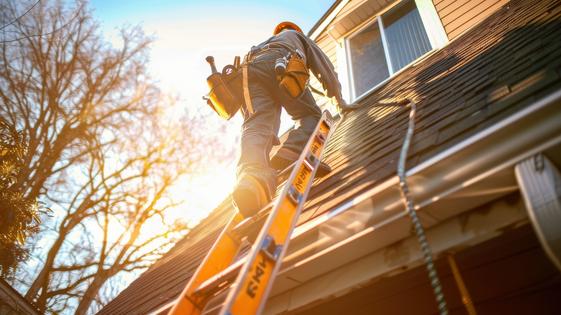Do It Yourself or Not: Install a power roof vent
With so many “excessive heat days” this past summer, attic air circulation has become important because the movement of air prevents the space from overheating. When the thermometer drops, proper air flow reduces attic humidity and improves insulation performance, so good air circulation in an attic is crucial, no matter what the weather.
Here’s the homework: The Home Ventilating Institute recommends that a powered attic ventilator should provide at least 10 air changes per hour. To determine the proper CFM (cubic feet per minute) rating for a fan, which will provide that number of air changes, multiply the total square footage of your attic by 0.7. To find the total square footage multiply the length of the attic times its width. Let’s say it comes out as 1500 square feet or 1500 x 0.7 = 1050 CFM. That means a fan with a 1050 CFM rating is needed.
Be sure to read the recommendations of the ventilator's manufacturer to know the amount of intake vents required for the fan to run efficiently. You might have to install additional vents in the eaves or gable ends.
To install a 14-inch power roof ventilator, which includes the labor and material, a contractor will charge $583. You can do the job for the cost of the materials, $200, and pocket a 66% saving. That’s assuming you have carpentry and electrical experience and tools. The materials include a power ventilator, an electrical box and cover, a short piece of three-wire BX or Romex cable, a package of wire nuts and a quart of roofing cement. You'll need basic carpentry tools, for cutting the roof opening, and a reciprocating saw, which you can rent. While you're working on the roof, you'll need a sturdy ladder and someone inside the attic to help you.
Don’t consider doing this job yourself if you have a steeply pitched roof, which is difficult and dangerous to work on or if you’re at all intimidated by working on the roof and cutting a hole in it. And if you do the job, an electrical circuit is needed to power the fan, so call an electrician if there isn't a circuit already in the attic.
Have we convinced you not to do this job yourself? We hope so.
Pro Cost: $583 — DIY Cost: $200 Pro time: 5.6
DIY Time: 9.5 — DIY Savings: $383 — Percent Saved: 66%
========
To find more DIY project costs and to post comments and questions, visit www.diyornot.com and m.diyornot.com on smartphones.
©2024 Gene and Katie Hamilton. Distributed by Tribune Content Agency, LLC.






























Comments